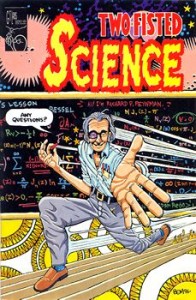The recent debate between Bill Nye, the Science Guy and Ken Ham, the Young Earth Creationist got me thinking about our methods of science communication such was the controversy it generated.
There is value in communicating science to the lay public when our society is so deeply ramified by its discoveries, its ideas and its risks. And sometimes it’s easy to do so. For instance, there are people who find certain areas of research fascinating but may not have the expertise or money to read journal articles. This ‘gee whiz ‘cohort is actively interested in learning about the next big thing and will devour blogs, popular articles and newspaper reports. It helps to avoid a condescending tone (like saying gee whiz) if you have an inclination to write an article to this audience. As Steven Pinker’s editor put it “You should assume your readers are as smart as you are, as curious as you are, but they don’t know what you know and you’re there to tell them what they don’t know.”
This sounds very like the deficit model of communication, which states that, the only barrier to public understanding and skepticism of science is their ignorance. Provide the information and this deficit will disappear. I think this probably works for most of the non-controversial areas of science when the target audience is interested. I’m thinking of myself learning about subjects in physics or geology that are explained by the legion of science communicators that inhabit every form of multimedia today.
But we have a multitude of issues where the science is not accepted by a significant number outside the scientific sphere, notably climate change and the efficacy of vaccines. This is very problematic because the impact of these controversies threatens everyone, expert and lay person alike. How best to engage with these ‘deniers’? I’d argue that the problem here is fundamentalism. And how do you change the mind of a fundamentalist? To paraphrase Eugenie Scott, some people find the idea that they’re related to animals abhorrent and all the evidence supporting this isn’t going to change their minds. In other words, you don’t. The best we can hope for is that most of us are reasonable people and the lunatic element is just being especially loud.
When it comes to the evolution-creationism debate, many profs advocate the silent treatment; their rationale is that by engaging in debate we somehow elevate the status of the deniers. Much better, they say, to keep on churning out the books and interviews where there’s no risk of some rhetorician running rings around your PowerPoint presentation. Richard Dawkins and Stephen Jay Gould both shared this sentiment. With Dawkins arguing we should deny them “the oxygen of respectability in the world of real science.” But Dawkins has spent half a lifetime engaging with Creationists on different forums, on TV, in his books, and latterly on Twitter. I don’t see much difference. And surely scientists can muster up an individual who can speak sense to an audience while holding their attention with a stentorian voice.
So what about those people who are not particularly interested in scientific discovery but are concerned about the impact that certain fields of research will have on them? Or those of us who do not take the time to read about the controversy and may be swayed by entities like anti-vax campaigns? We have to have an included middle.
Unfortunately to some, certain theories can become “evidence-resistant” and that: “… as climate scientists know all too well, simply relating the facts of science isn’t enough. No matter that the overwhelming weight of evidence shows that climate change is real, or that vaccines don’t cause autism. When scientists find themselves just one more voice in a sea of ‘‘opinions’’ about a complex scientific issue, misinformation takes on a life of its own.” (Jackson et al. 2005)
One way to prevent this is to create a space for scientists to engage with the public, where they can engage in a dialogue. This is in contrast to the one-way, hierarchical approach of the deficit model I spoke of earlier. Jackson, et al.(2005) point out that when the public are left out of any such dialogue it should come as no surprise that they are distrustful of the outcomes of the resulting applications. The arrival of genetically modified organisms (GMO) demonstrated what can happen when there is a lack of upstream public engagement regarding contested science. Frankenstein Food campaigns should come to mind!
It’s also vital to frame science so that it’s easily accessible to the widest range of people all with different biases, beliefs, and ideologies. The anti-vax campaign is successful because it is framed with ‘Think of the children!’ the climate change deniers point to uncertainty of prediction; this coupled with the difficulty in conveying the danger of something that will take decades to manifest helps their campaign tremendously.
Another idea is to teach how science works to people at an early age. This is advocated by Arons who writing in 1983 comes at the issue of science literacy from a paedagogical standpoint. He says that scientific literacy is in a “lamentable state” and crticises the idea that it could be achieved through “verbal inculcation”. According to the author this approach seems to be little more than rote learning.The central point of Arons is his repetition of the idea that scientifically literate individuals should be able to answer “”How do we know …?” and “Why do we believe …?” questions”. If the majority of people were able to give an answer to these questions on the controversies mentioned here I think we’d have much less to lament about.
One trend to be picked out of the evolution of science communication is the realization the public isn’t monolithic either. And to clump every non-scientist into one social unit is a simplification too far. With ancient rhetoric and 21st century technology we have the ability to frame our arguments to every audience who will listen, reflecting their interests, fears and concerns.
References
Arons, A.B. (1983). Achieving Wider Scientific Literacy. Daedalus. 112 (2), p. 91-122.
Jackson, R Barbagallo, F Haste, H. (2005). Strengths of Public Dialogue on Science-related Issues. Critical Review of International Social and Political Philosophy. 8 (3), p. 349–358.
Author: Adam Kane, kanead[at]tcd.ie, @P1zPalu
Image Source: davidakirby.com


